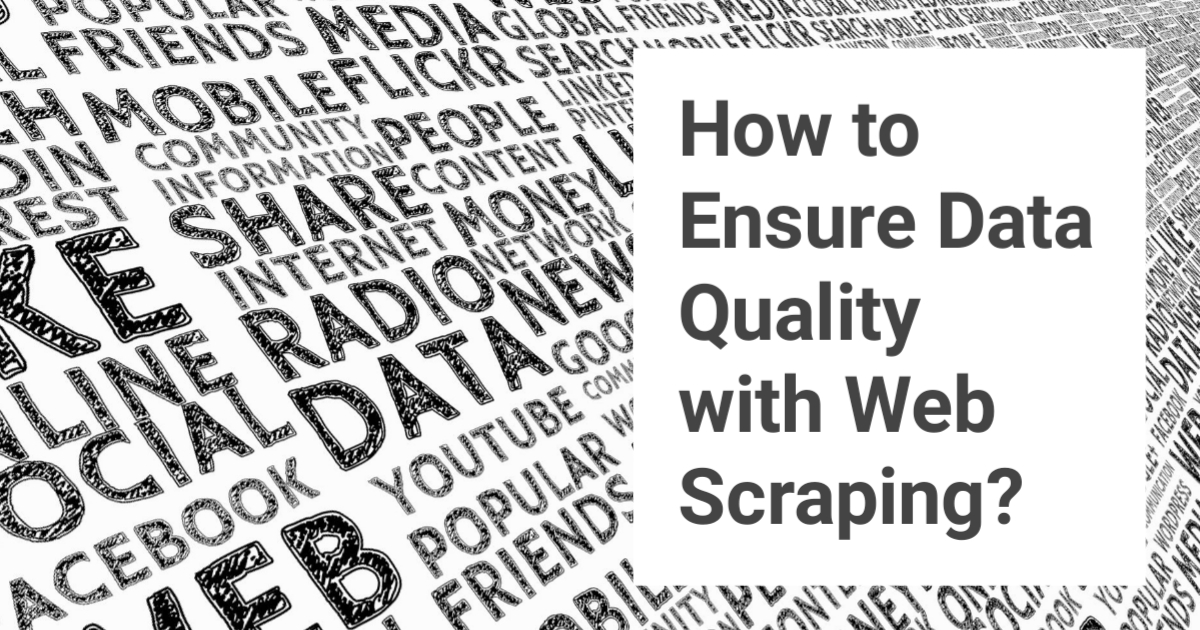Obtaining data for market and customer analysis has become an integral part of running a business. Some leading companies worldwide use data strategically to better understand their users, customers, and market sector.
This only helps if the data is reliable and of high quality. Without quality data, companies can’t forecast, plan, or track their business performance in the long run, which ultimately impacts their success. To ensure data quality, a company needs different tools and techniques.
In this post, let’s dive deeper into the general quality of content on the Internet, metrics to evaluate data quality, and how scraper API can ensure data quality.
Quality of Available Data on the Internet
Data is among the most valuable resources available to today’s marketers, companies, agencies, and more. But data is only useful if it is high quality. In general, a large part of the data available on the Internet is of low quality. This could be because of different causes, such as manual data entry errors, data transformation problems, data duplication, data ambiguity, or incomplete information.
Poor quality of data and the impacted data management processes weaken critical business activities. As per the Gartner survey, firms estimate that poor-quality data costs them about $13 million annually.
Metrics to Evaluate the Data Quality
There is a range of data and metrics that firms use for data quality measurement. Here are the six main metrics with which companies can evaluate the data quality:
The Ratio of Data to Errors
This most obvious type of data quality metric enables companies to track the number of errors they have relative to the size of their data set. In case a company finds fewer known errors while the size of their data stays constant or increases, they know that their data quality is improving.
Data Transformation Error Rates
Data transformation is the process of obtaining data stored in one format and converting it into a different format. These errors are usually an indication of data quality problems. Companies can gain a better insight into the overall quality of their data by measuring the number of data transformation operations that fail or take longer than expected to complete.
Number of Empty Values
Empty values within a data set usually indicate that information is missing or entered in the wrong field. These values help track the data quality problem. Companies can count how many empty fields are there within a data set and then track how the number changes as time goes by.
Email Bounce Rates
For companies running a marketing campaign, poor data quality is one of the most common causes of email bounces. Incomplete or outdated data makes companies send emails to the wrong addresses. An easy way to find out the email bounce rate is to divide the number of emails bounced by the number of sent emails and then multiply the result by 100.
Data Time-to-Value
Companies can also evaluate the data quality by calculating the time their team takes to derive results from a given data set. While many factors, such as the automation of data transformation tools, impact the data time-to-value, data quality problems are a setback that slows down a company’s efforts to get valuable information from data.
Scraping Solutions to Acquire Quality and Ready-to-use Data
Web scraping is the procedure of taking data from websites. After extraction, the data can be easily downloaded and shared. You can use this process to find new data, verify data, or make current data more complete. Here is how you can use a scraping solution as another data quality tool.
Complete Product Data
In addition to accuracy, the data must also be complete. Product data can be left incomplete or outdated. So, an easy way to have complete product data is to use a scraper API to scrape product information from eCommerce sites. Scraping product descriptions and details on sites can help fill in gaps and stay updated. If you’re considering performing web scraping for your business, you should definitely check it out
.
Use Public Sources for Information Verification
Companies obtain internal and external data. For internal data verification, they must check the processes used to ensure they are working as intended. External data verification involves comparing that data against the original data source. Scraping public sources of available data is an easy way of checking information against itself.
Use Custom Solutions to Meet Data Needs
During data quality analysis, companies often discover that they need supplemental data to enhance the quality. They can collect that additional data using custom scraping solutions. If companies find that information gaps are hard to fill, they might need a custom scraping solution.
Final Words
Data is essential for businesses to grow and prosper. Using quality data, companies can better understand their customers and create new business models that will help them stay ahead of their competition. Data offers opportunities in different aspects of the business, so a company needs to find ways and tools like scraper API to improve operations by changing how they do things.


